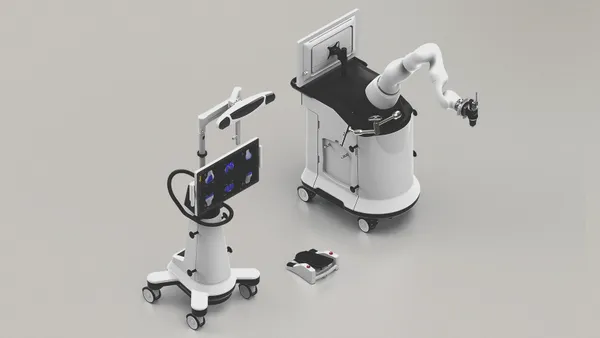Dive Brief:
- The U.S. Food and Drug Administration released three draft guidance documents on Wednesday intended to strengthen and modernize the 510(k) program.
- The agency set out its latest thinking on selecting predicate devices, using clinical data and conducting appropriate performance testing for implants.
- The FDA called the recommendations an important step in the Center for Devices and Radiological Health’s work to optimize the clarity, predictability and consistency of the 510(k) program and implement the 2022 Medical Device User Fee Amendments (MDUFA V).
Dive Insight:
As part of MDUFA V, the FDA committed to cutting the total time to decision for 510(k) submissions from 128 calendar days in 2023 to 112 calendar days in 2027. The goal is to issue a decision on 95% of 510(k) submissions within 90 days. Work is underway to modernize the 510(k) program and enable the FDA to meet its commitments.
The FDA first announced planned changes to its 510(k) pathway in 2018, with former Commissioner Scott Gottlieb and Center for Devices and Radiological Health Director Jeff Shuren saying that devices coming to market through the pathway “should either account for advances in technology or demonstrate that they meet more modern safety and performance criteria.”
At the time, the agency had talked about retiring older predicate devices, but it moved away from that approach after considering submitted comments.
The FDA shared its latest plans this week by publishing three draft guidance documents. In one of the drafts, the administration recommends four best practices to follow when choosing a predicate device to support a 510(k) submission.
Officials are advising companies to choose predicate devices that were cleared using well-established methods and that meet or exceed expected safety and performance. Devices also should be free from unmitigated use related or design-related safety issues and without an associated design-related recall. The FDA views methods from sources such as recognized consensus standards and its own guidance as “well established.”
Another draft is intended to clarify when clinical data may be necessary to demonstrate substantial equivalence. The FDA describes four scenarios in which clinical data may be needed, including times when there are differences between the indications for use or differences between technological characteristics for a new device and its predicate.
The third draft addresses the “evidentiary expectations” for implant devices. The FDA drafted the text to help developers design and run performance tests to support 510(k) submissions. The document covers a range of topics from non-clinical issues, such as biocompatibility, to human factor and clinical performance testing.
The agency is accepting feedback on the drafts until Dec. 6.












